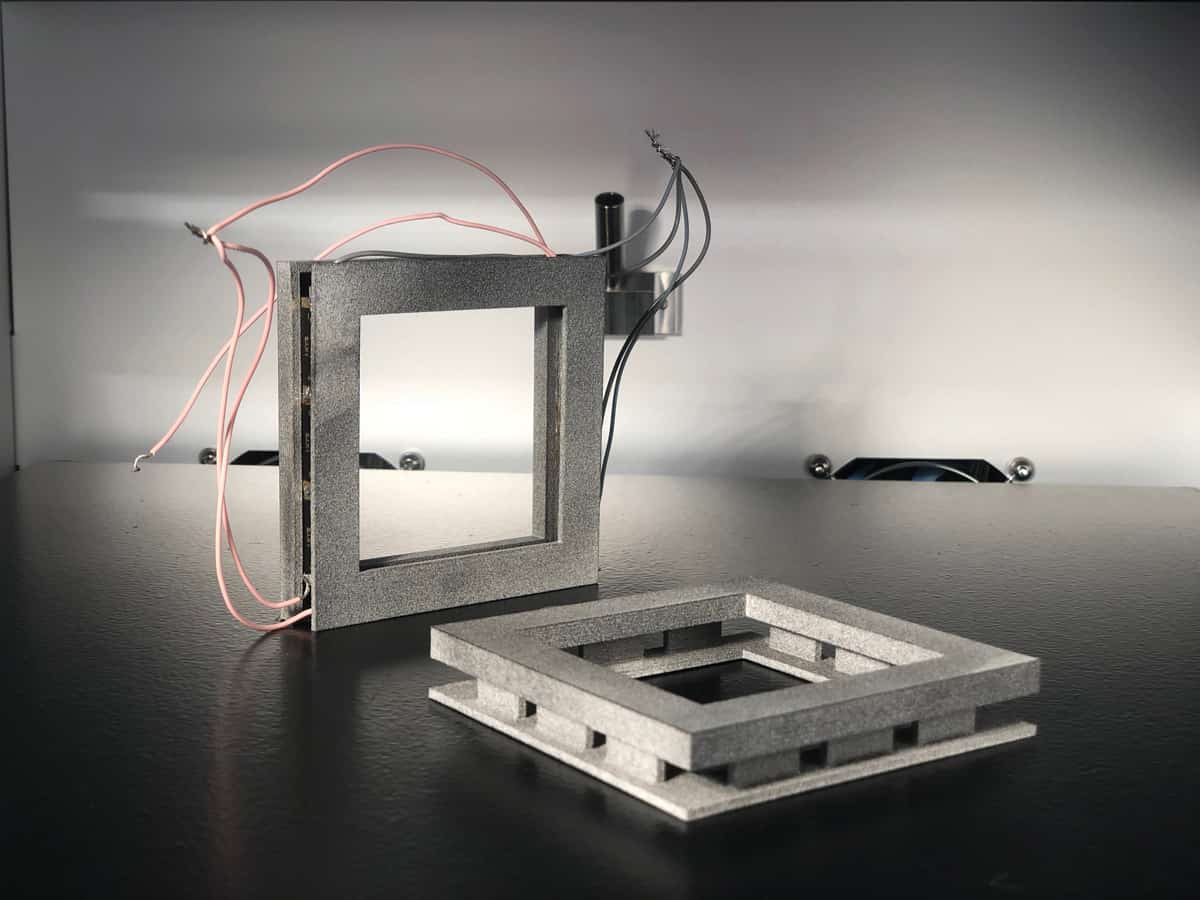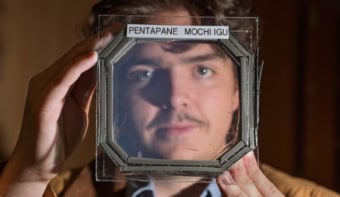Windows that transform solar energy into electricity without plunging the rooms behind them into semi-darkness might sound too good to be true, but new techniques could yet make solar windows a common element in future urban architecture, as Sam Jarman explains

Back in 2010 Oxford PV was a small start-up with a big dream: it wanted to pioneer the market in solar windows. The idea of integrating sources of renewable energy directly into the buildings they power promised to transform the electrical grid – perhaps even realizing the goal of making cities carbon neutral on a relatively short timescale – and the company’s founders seemed well placed to turn it into reality. One of them, physicist Henry Snaith, had developed a dye-sensitized solar photovoltaic (PV) cell in his laboratory at the UK’s University of Oxford that was thin enough to be semi-transparent, while maintaining relatively high efficiencies. Using this material to make electricity-generating windows seemed like a logical next step.
Soon, however, the concept ran into difficulties. As it turns out, creating an effective, commercially competitive solar window using dye-sensitized cells was not nearly as easy as Oxford PV’s founding team initially hoped. “Solar windows are a very difficult product to commercialize,” explains Chris Case, the company’s chief technology officer. “They need to be both architecturally satisfying and sufficiently transparent. From a commercial product standpoint, this means you have to figure out how to make electrically active windows in different ways for every building, while meeting regulatory installation requirements.”
For the Oxford PV team, these challenges meant that solar windows went on the back burner. By 2012 researchers there were experimenting with a novel perovskite material that has the deeply un-windowlike property of being highly light-absorbent. The new plan was to install layers of this perovskite directly onto previously installed silicon solar cells, greatly improving their absorption efficiency. While typical silicon PV cells have an efficiency of around 25%, Case says that the perovskite-on-silicon technique could push this past the 30% mark without requiring major changes to existing installations. “By simply piggybacking perovskite on top of silicon, we have a platform that’s already accepted,” he says.
Reviving the dream
Despite the exit of one early pioneer, however, the dream of creating windows that can power the buildings behind them is far from dead. This is partly because the dye-sensitized techniques pioneered at Oxford PV are no longer the only option. A more recent startup in the field is the American firm UbiQD. Spun out of the Los Alamos National Laboratory in 2014, the company’s full name – “ubiquitous quantum dots” – hints at its ambitions. Quantum dots (QDs) are semiconducting nanoparticles typically made up of just thousands of atoms, and the company’s founder and chief executive, Hunter McDaniel, argues that they could resolve some of the challenges associated with making windows that generate electricity from sunlight.
Relatively cheap and easy to manufacture, QDs have a variety of unique optical properties, including their ability to re-emit the light they absorb at specific frequencies. These frequencies can be finely tuned by altering the shape, size and composition of QDs, allowing close control over their re-emitted light. So instead of using QDs to absorb light directly on the window’s surface, UbiQD’s design relies on directing incoming light to PV strips around the window’s edge. “Inside a luminescent solar concentrator, sunlight excites QDs, causing them to glow,” McDaniel explains. “Most of that light they emit gets trapped in the window pane and is ultimately guided into small solar cells hidden in the window frame.”

Because QDs can vary widely in their shapes, sizes and compositions, McDaniel adds that they offer an easy fix to one main drawback of solar windows: unattractive tints that block out too much sunlight. By carefully selecting the composition of their QD mixtures, UbiQD’s scientists aim to tune both the absorbent and aesthetic properties of their windows. “The right kind of near-infrared quantum dots can enable efficient luminescent solar concentration while maintaining a grey, colour-neutral tint without lines or haze,” McDaniel says.
UbiQD’s founder acknowledges that, on its own, the company cannot overcome all of the difficulties inherent in getting solar windows to market. As a small business, they are not set up to manage an entire production process for windows or window glass; instead, they hope to collaborate with existing manufacturers. “There are plenty of highly productive window manufacturing assets already deployed, so we don’t want to compete with or disrupt the existing industry – we want to partner with it,” McDaniel says. “We are seeking at least one partner at each step in the value chain, including window manufacturers and architects.”
Electricity and data
One of the companies UbiQD is currently talking to is another 2014 start-up, PHYSEE. Based in Delft in the Netherlands, PHYSEE has developed a niche in the solar-window industry thanks to products that use incoming sunlight as a source of both energy and data on the local climate. In the near future, the company intends to release products that direct sunlight to sensors between solar cells, making it possible to detect changes in environmental factors such as light levels, temperature and humidity.
Instead of QDs, PHYSEE’s products rely on window coatings composed of inorganic host materials, doped with impurities of rare-earth metals in specific oxidation states. Like UbiQD, however, their windows will redirect light to external PV strips. “We are currently developing products that will work on the principle of luminescent solar concentrators, which will use the whole window surface for solar collection,” explains Ana Jung, head of R&D at PHYSEE. Whereas conventional glass reflects 30% of the incoming sunlight, she explains, the company’s next generation of products will capture this light with a patented luminescent coating on the glass surface and subsequently re-emit it towards the edges of the window. There, integrated solar cells will convert it into electricity.
Jung argues that PHYSEE’s upcoming products have some advantages over both QDs and the organic dyes used in Oxford PV’s original cells. “We are using stable materials that do not degrade over time,” she says. “The inorganic material uses no toxic heavy elements, so there are no environmental implications.” Jung adds that the composition of dopants in the product’s coating ensure desirable aesthetics as well. “The coatings have unique optical properties, including low self-absorption, which allows for high efficiencies and a broad absorption range. This means a large part of the solar spectrum can be captured, with almost no colouration of the window,” she says.
Like UbiQD, PHYSEE intends to collaborate with existing manufacturers and researchers, making use of well-established processes such as sputtering coatings onto glass. This technique, Jung points out, is already widely used in the glass industry for anti-reflection and solar-blocking coatings , which will mean “we can integrate our products into any existing manufacturing line,” she concludes.
Market impact
As researchers in these unconventional solar-energy firms work to make their products more efficient, attractive and structurally sound, managers also face a separate challenge: persuading both potential business partners and policymakers that such products could become a major part of the renewable-energy market. Case, of Oxford PV, believes that once industry professionals and policymakers properly understand the firm’s perovskite-on-silicon technique, it could completely transform the solar-cell market. “Getting acceptance of our technology in the marketplace is our main hurdle,” he says. “But once that’s done, we will go beyond what silicon can do. We now have a clear and identifiable roadmap to bring our solar-cell efficiency beyond 30%. That could really change the economics of the PV marketplace.”
In the coming decade, Case hopes that Oxford PV’s product will diversify the power grid, increasing opportunities in the developing world while contributing to carbon-neutral cities. “When you can build the infrastructure to power a community from an area the size of a single home, without the need for utility companies’ involvement, you reimagine the power grid in a way that can change society. I think we’re sitting on a complete disruption,” he argues.
Jung shares this attitude and is confident that PHYSEE’s products could transform the industry. “I believe that every window should be electricity and data generating,” she says, adding that urban environments will be the ideal environment for implementing the technology. “There’s a particularly big potential for buildings in cities that are built to be high, with mainly glass surfaces. In combination with solar panels, we are contributing to our ultimate goal of energy-neutral buildings.”
McDaniel is more cautious in predicting the impact of UbiQD’s product. Rather than completely disrupting the industry, he believes that collaborations between companies with different technologies will bring about more diverse future for the solar-window market. Nevertheless, he agrees that his company’s technology holds great potential for urban renewable energy. “It’s in urban settings, where the price of electricity is highest, that the space available for renewable energy sources is minimal,” he explains. “Ultimately, this technology will be seamlessly integrated into buildings and people won’t even know it’s there. What they will notice is lower energy bills, and the global benefits associated with utilization of renewable carbon-free energy.”



